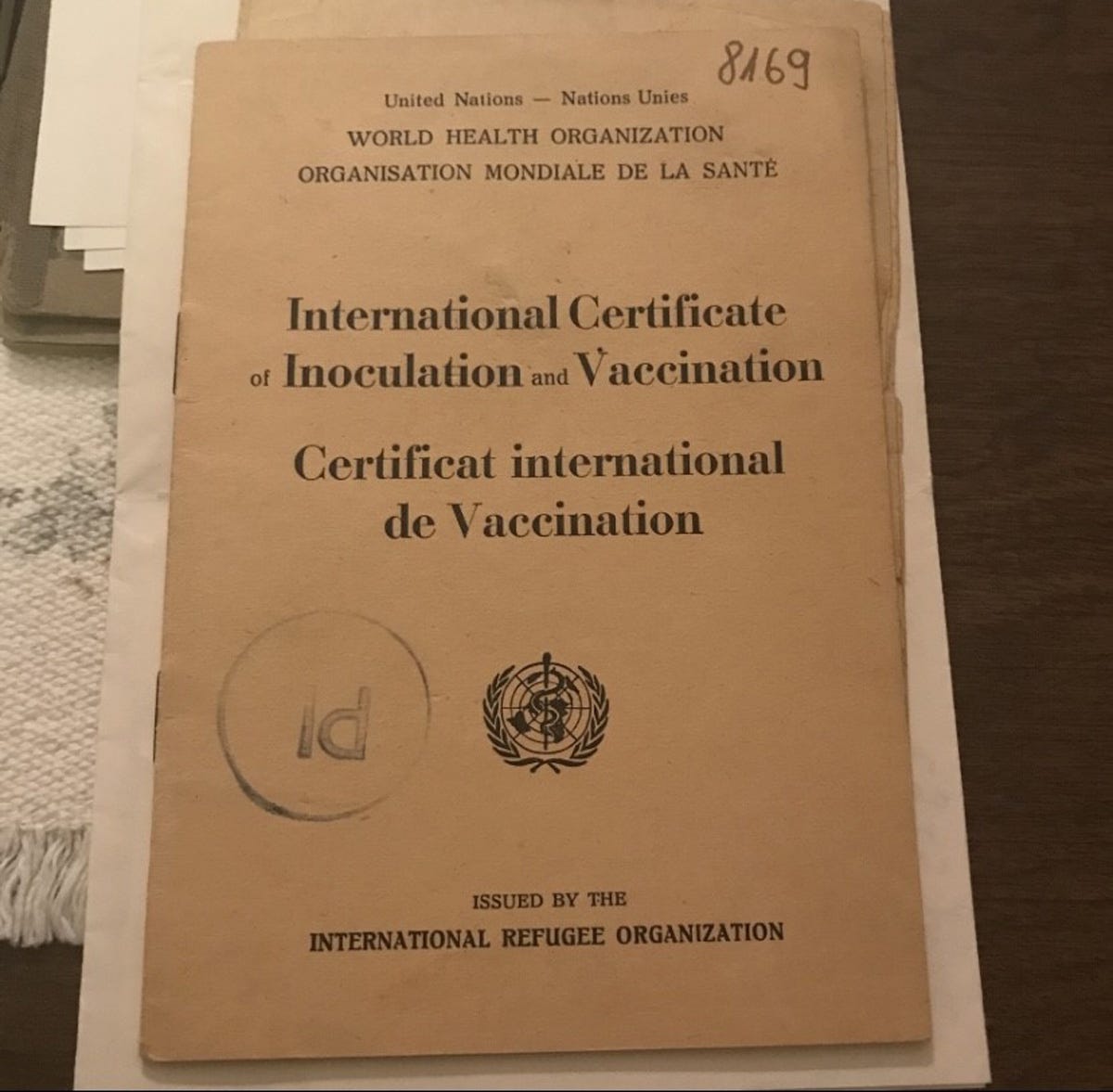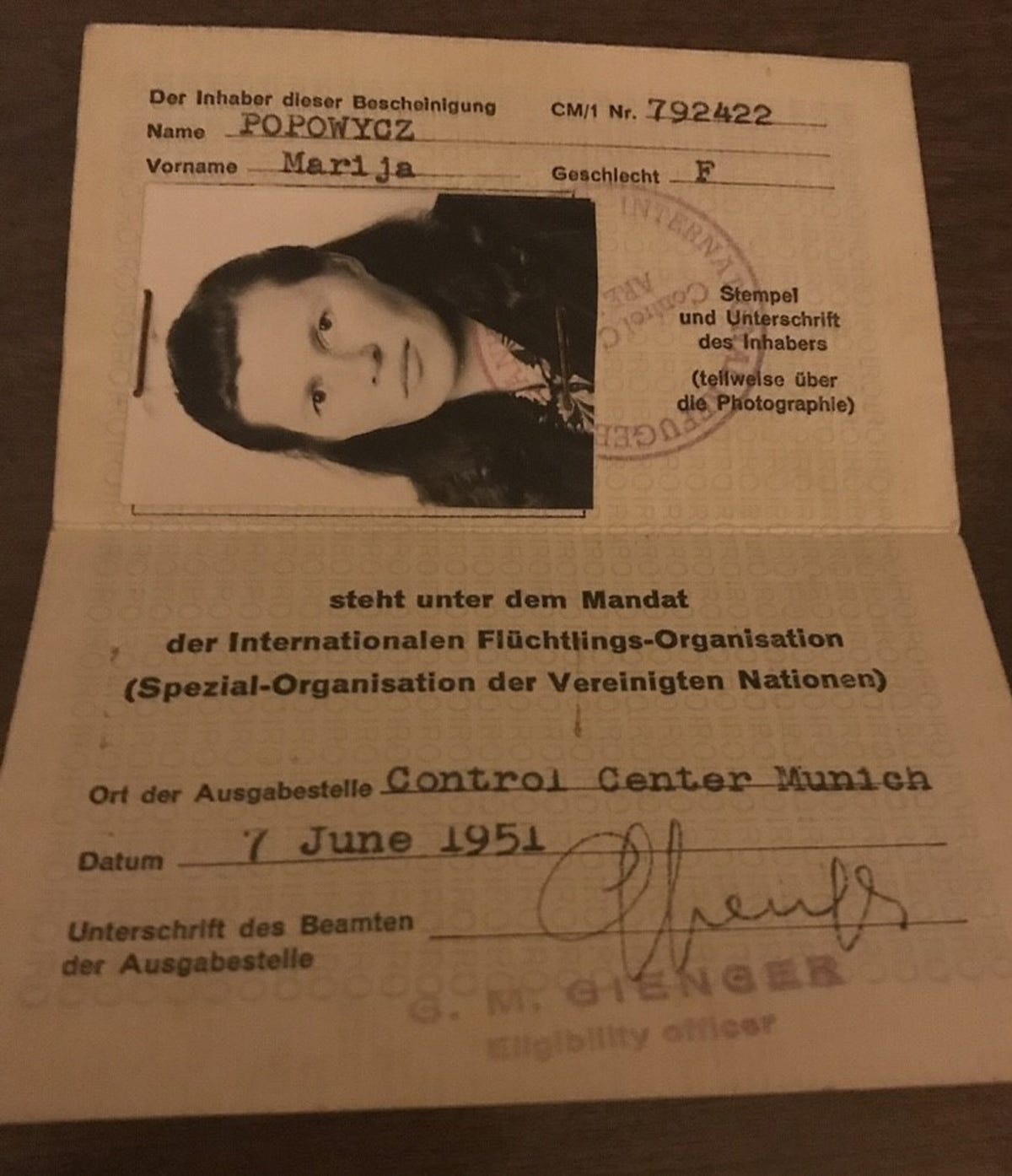The Origins of the International Tracing Service
Another insightful article from the blog of the National World War II Museum. Read this and other WWII posts at https://www.nationalww2museum.org
In the aftermath of World War II, a monumental effort to piece together the shattered lives and lost connections of millions of survivors and victims took shape through the International Tracing Service (ITS). This organization, founded in 1943, became the custodian of an extensive archive documenting the fates of those affected by the war.
The Allies created the International Tracing Service (ITS), now referred to as the Arolsen Archives, to centralize postwar efforts to locate missing persons and help survivors discover the fate of family members in the aftermath of World War II and the Holocaust.
After World War II, tens of millions of people were left stranded in Western Europe as the result of deportation, forced labor, ethnic cleansing, murder, forced migration, and immigration during the war. The Supreme Headquarters Allied Expeditionary Force (SHAEF) and Soviet officials estimated that by September 1945, approximately 13,664,000 displaced persons living in occupied Germany and Austria had applied for some sort of assistance. Typically, international relief agencies such as the United Nations Relief and Rehabilitation Administration (UNRRA) helped manage the material aid, registration, and repatriation of millions of displaced persons. Increasingly, however, many international aid organizations spent time helping those displaced find missing family members and friends.
As Tara Zahra explains in her book The Lost Children: Reconstructing Europe’s Families after World War II, the process of searching for people after the war proved to be heart-wrenching and extremely challenging:
As the Nazi empire crumbled, millions of people roamed the continent in search of lost family members. They placed ads in newspapers, waited on train platforms, and wrote letters to new international agencies and government officials. During the war many Europeans sustained themselves with fantasies of reunion with their loved ones. After the war they waited and hoped, often in vain for signs of life.
Initially, efforts to reunite family members proved extremely difficult because no centrally located documentation center existed. By the mid-1950s, however, Allied personnel had collected over 30 tons of documents and materials, which were housed in Arolsen, Germany, to help displaced persons discover the fate of their loved ones.
THE EARLY YEARS: COLLECTING AND REGISTERING
As early as 1943, prominent archivists called for plans to administer and capture German war records. Ernst Posner, a distinguished German-Jewish archivist who was interned in the Sachsenhausen concentration camp before arriving in the United States in 1939, was among the first to broach the topic with President Franklin Roosevelt and General Dwight Eisenhower. He reportedly stated that “the protection of the records of occupied territory had to be acknowledged by the conqueror as a kind of moral obligation.” To ensure this task was carried out, Posner prepared reports on the German archival profession, wrote numerous War Department manuals concerning German record-keeping practices, and served as an adviser for the US Army’s Department Records branch on German documents.
In part due to Posner’s efforts, as the Allies liberated Western Europe, special attention was given to collecting, organizing, and housing German documents and materials. On February 15, 1944, SHAEF set up an official registration and tracing service for missing people called the Central Tracing Bureau (CTB), which was located in London. And, during the liberation of France in August 1944, SHAEF paid special attention to the collection of all documentation left by Nazi occupation forces, specifically documents containing concentration camp lists, inmate transport lists, individual prisoner cards, death certificates, inventories, and infirmary lists. During the liberation process, SHAEF also began registering and assigning all displaced persons specific identification cards, the copies of which were held in Versailles, France.

As Allied forces liberated more territories in Europe, they continued to confiscate depository files from concentration camps, eventually storing them in a former SS school and barracks in the town of Arolsen, Germany (now known as Bad Arolsen). In fact, one of Buchenwald’s satellite forced labor camps, located inside the SS training school, became the first site of the burgeoning archive. The Allies chose Arolsen because it had not suffered much damage from the war, had intact telephone and telegraph lines, and was strategically situated at the juncture of American, French, British, and Russian occupation zones.
In July 1945, UNRRA became the agency solely responsible for organizing and indexing all Nazi documents that had been gathered by Allied forces. This included collecting and managing a wide range of documents such as transport lists, Gestapo reports, police documents, and records of forced labor. It was also at this time that Allied officials transferred records from the CTB in London and copies of registrations held in France to Arolsen. According to the historian Susan Slyomovics, “the creation of this ‘small archive’ represented one of the foremost, enduring projects of humanitarian documentation and intervention.”
THE INTERNATIONAL TRACING SERVICE, 1948-2012
In 1947, the International Refugee Organization (IRO) replaced the UNRRA as the main supervisory organ that oversaw the management of this growing archive. On January 1, 1948, the IRO renamed the Central Tracing Bureau as the International Tracing System (ITS) and officially opened it as a resource reservoir for displaced persons to find relatives, friends, and other missing persons. Since the institution held relatively few documents at the time, in addition to the material already collected, the IRO also registered and interviewed displaced persons, investigated death marches, and sent questionnaires out to thousands of local authorities and former prisoners. For instance, the research project known as the “graves re-check” created detailed maps of death marches in order to determine where and when certain people died. This collection of investigative reports and questionnaires in which former prisoners provided information about little-known detention centers became one of the main sources ITS cross-referenced when filling requests to search for missing persons.
By 1955, Belgium, France, Germany, Israel, Italy, Luxembourg, the Netherlands, the United Kingdom, and the United States created an International Commission (IC) to oversee and govern the nascent archive in Arolsen. The IC later expanded to include representatives from Poland and Greece. It was during this time that a number of extremely valuable collections came to Arolsen, including documents from Buchenwald, Dachau, Mauthausen, and other concentration camps that Allied personnel and survivors managed to save. Additionally, the archive collected hundreds of thousands of lists and registration documents pertaining to foreign forced laborers. By the end of 1952, over 30 tons of documents and materials had been obtained by the Allies and housed in Arolsen.

After the 1950s, the International Committee of the Red Cross (ICRC) took over the management of ITS. Once supervision was handed over to the Red Cross, ITS became a closed archive. However, archivists accepted requests from people hoping to trace the fate of their friends and family members and played a prominent role in providing documents for restitution claims to the German government. As ITS’s deed of purpose states, the main goal of the archive was to “serve as restitution for the victims and their families, be a warning to all future generations to never again allow such a horror to inflict humanity.” To date, there have been approximately 2.3 million T/D (Tracing Documentation) case file requests since 1946 from generations of individuals in search of family members and their itineraries during the Nazi period.
AROLSEN ARCHIVES, 2012-PRESENT
Today, the archive, now referred to as the Arolsen Archives-International Center on Nazi Persecution, contains the world’s largest single depository of wartime material documenting Nazi persecution as well as material from many postwar trials. It includes over 30 million files, index cards, and lists detailing the fates of victims of the Holocaust and Nazi persecution, including POWs, concentration camp prisoners, and foreign forced laborers.
The mission statement of the Arolsen Archives states, “Based on our unique collection on the victims of Nazi persecution, we honor their legacy by engaging with today’s society to preserve historical truth and stand up for respect, diversity, and democracy.” Consequently, the archive primarily contains sources pertaining to the postwar experiences of survivors, including but not limited to: displace persons registration forms; Care and Maintenance (CM/1) forms produced by the IRO; the IRO and UNRRA’s administration proceedings; documents relating to German businesses that use foreign forced labor; vast quantities of information on Nazi concentration camps; and correspondences relating to postwar compensation claims. Most importantly, ITS contains Tracing Documentation files and the Central Name Index (CNI), a vast collection of card files with over 17.5 million individuals, which physically lists deportees, internees, prisoners, concentration camp inmates, ghetto inhabitants, and displaced persons.
The ITS was created to centralize postwar efforts to discover the fates of missing people in the aftermath of World War II and the Holocaust. As Thomas Buergenthal, a survivor of Nazi persecution, stated: “We must never forget that the documents on deposit in Bad Arolsen are a sacred memorial held in trust to honor the memories of the millions of victims of the Holocaust and other Nazi atrocities.” The Allied efforts to rescue, collect, and document the atrocities committed by the Nazi regime not only helped displaced persons find loved ones, but also continues to be an important resource for future generations wishing to learn about their relatives’ experiences during World War II.




Has anybody seen The Equalizer 2? I loved storyline/subplot about Sam, a Yiddish-speaking Holocaust survivor searching for a painting of the sister he lost in the Holocaust. Most reviewers have panned it, but in my mind, it cements Mr. McCall as an equalizer for all, and reminds us that his first mission is to help those who can't help themselves.